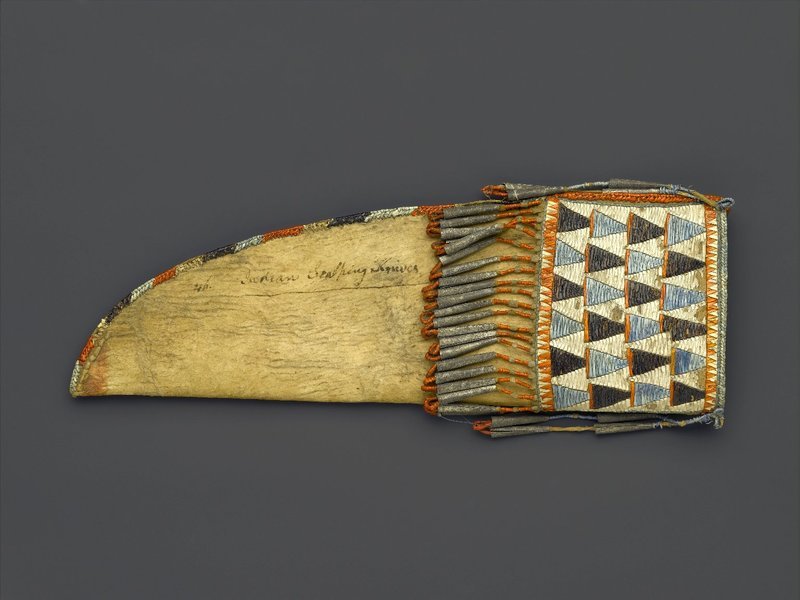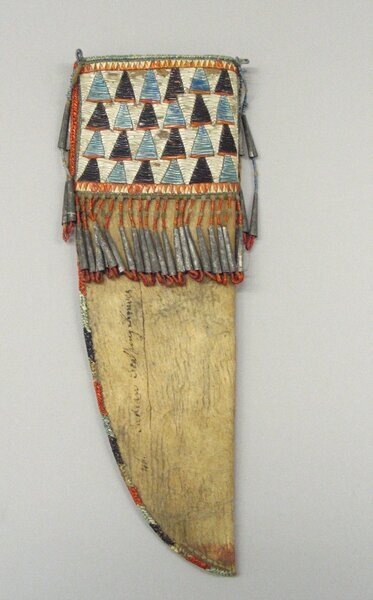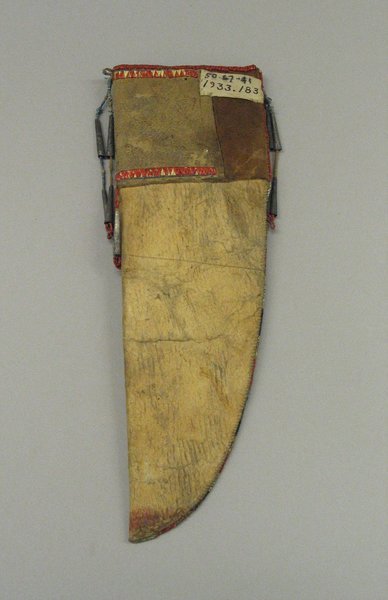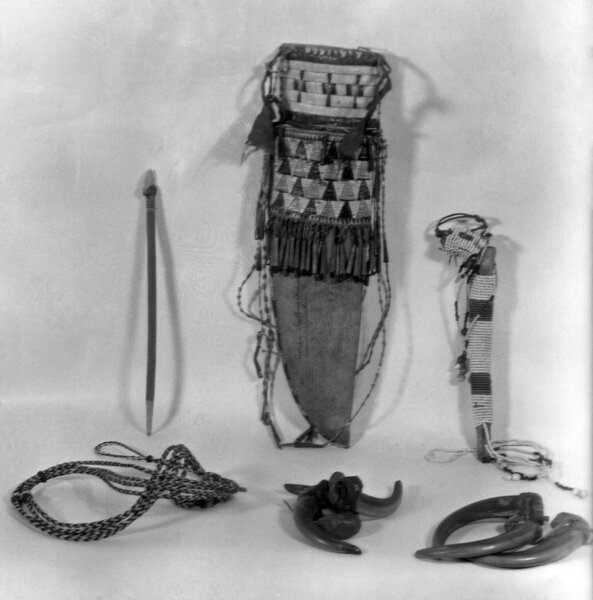Knife Sheath Item Number: 50.67.41 from the Brooklyn Museum





Description
The sheath is made of a folded piece of rawhide with quill work embroidery along the edge in alternating lengths of red, blue, black and yellow. A piece of soft buckskin is wrapped around the top as a panel or cuff. The added piece is decorated with quillwork; a white field with alternating triangles of blue and black, underlined with orange (formerly red?) arranged in rows. The top and bottom of this cuff are decorated with narrow borders composed of red and white triangles. The entire pattern is outlined with a thin blue line. The narrow borders continue part way around to the back of the sheath, but the quill work pattern does not. Tin cones dangle from the top two corners of the sheath from hide thongs wrapped with red and blue quills and from the bottom of the cuff on thongs wrapped with red quills. These thongs are threaded through the tin cones to form decorative loops that protect their ends. There is a native repair on the reverse side of the sheath.
Inscribed
"Indian Scalping knives" number "46"
Credit Line
Henry L. Batterman Fund and the Frank Sherman Benson Fund
Label
The Jarvis Collection of Native American Plains Art
The articles in this case and the adjacent clothing case are some of the earliest and finest Eastern Plains pieces in existence. They were collected by Dr. Nathan Sturges Jarvis, a military surgeon stationed at Fort Snelling, Minnesota, between 1833 and 1836. He purchased some of the objects, while some may have been given in exchange for his medical services. These works display indigenous people’s ingenuity in combining trade materials such as cloth, metal, and glass beads with traditional hides, red pipestone, and porcupine and bird quills.
Item History
- Made between 1800 and 1825
What
- Name
- Knife Sheath
- Identification Number
- 50.67.41
- Type of Item
- knife sheath
- Material
- rawhide hide, buckskin, porcupine quill, tin, sinew and thread
- Overall
- length 9.5 in, width 3.25 in
Where
- Holding Institution
- Brooklyn Museum
When
- Creation Date
- between 1800 and 1825
Other
- Location
- American Identities: A New Look, American Art Galleries, 5th Floor, Visions and Myths of a Nation, 1800–1890, 5th Floor
- Classification
- Arms and Armor